Unit2 Lesson7 Arriving in Beijing课件(26张PPT)
文档属性
| 名称 | Unit2 Lesson7 Arriving in Beijing课件(26张PPT) |

|
|
| 格式 | pptx | ||
| 文件大小 | 19.4MB | ||
| 资源类型 | 教案 | ||
| 版本资源 | 冀教版(三年级起点) | ||
| 科目 | 英语 | ||
| 更新时间 | 2022-03-14 18:08:22 | ||
图片预览

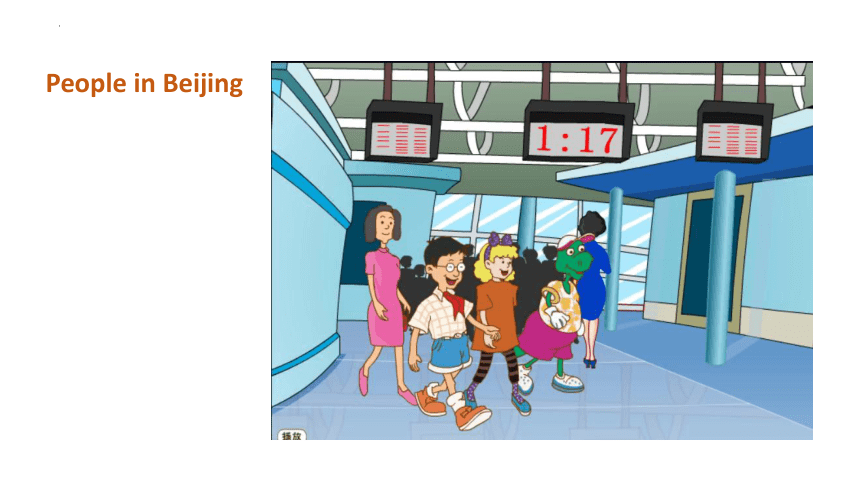
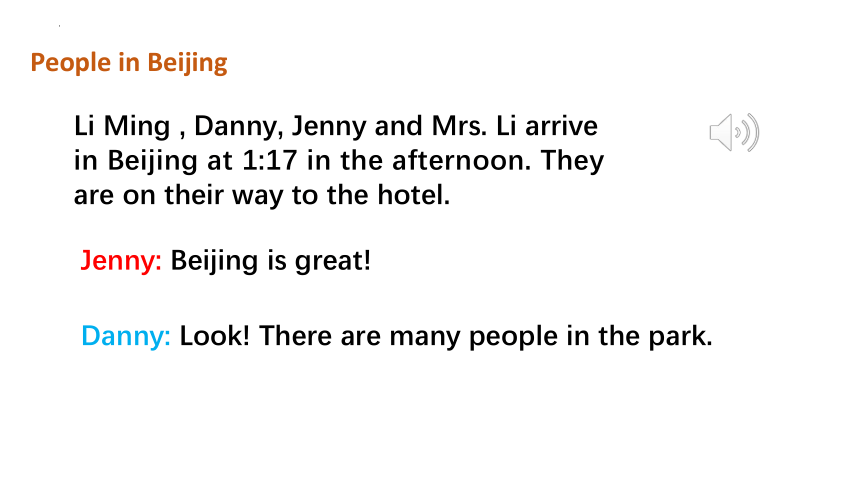

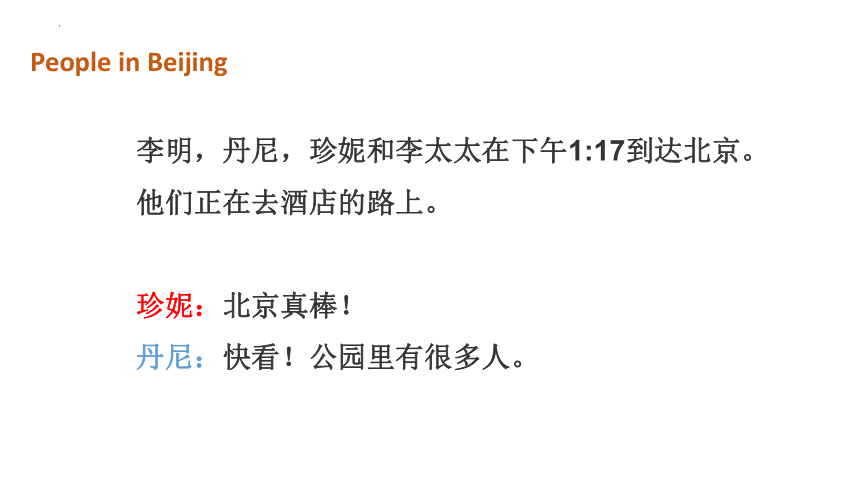
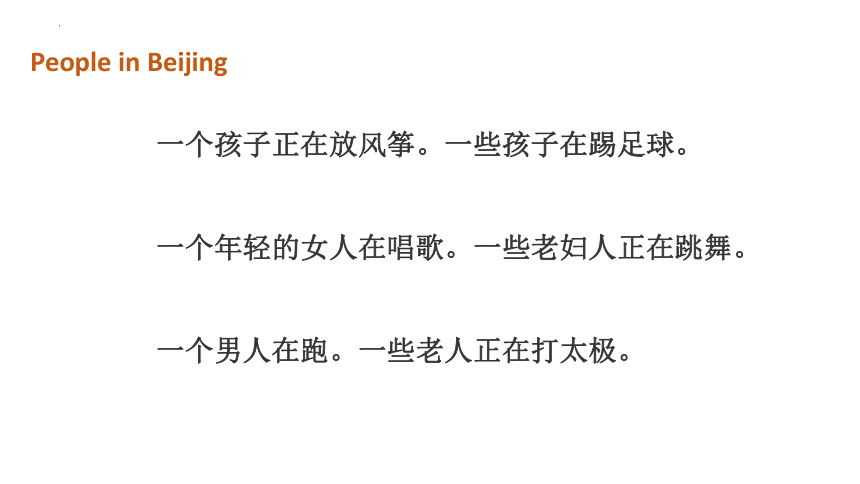
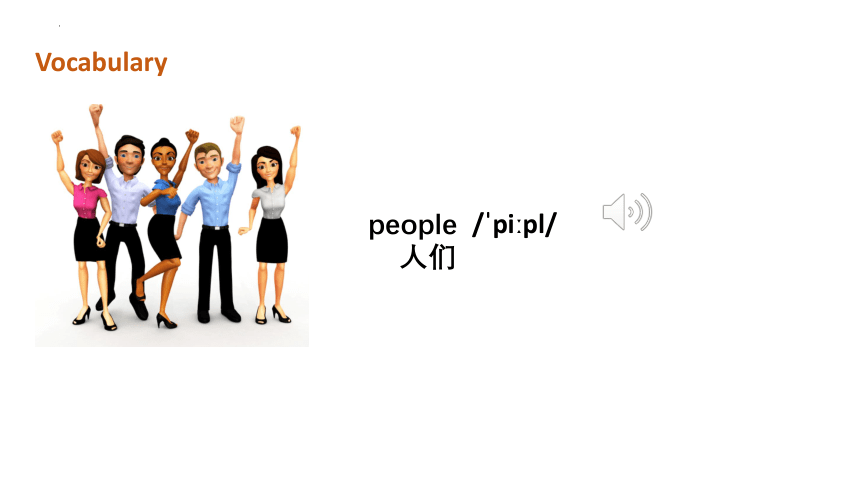
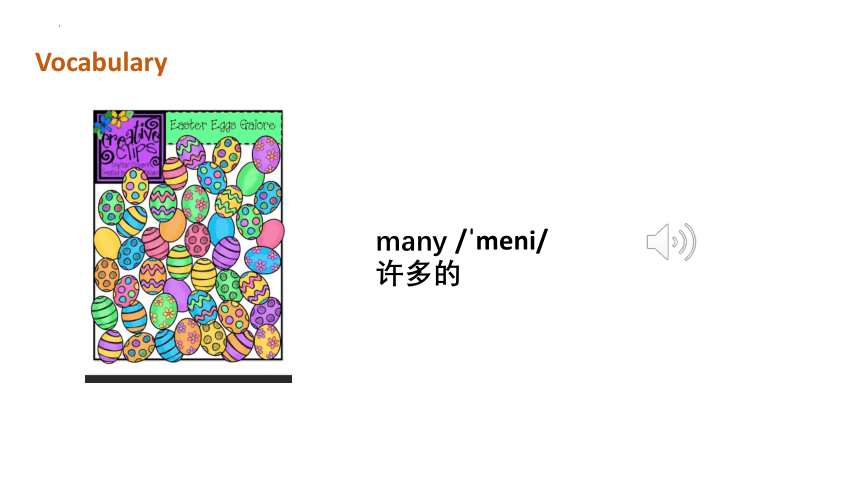
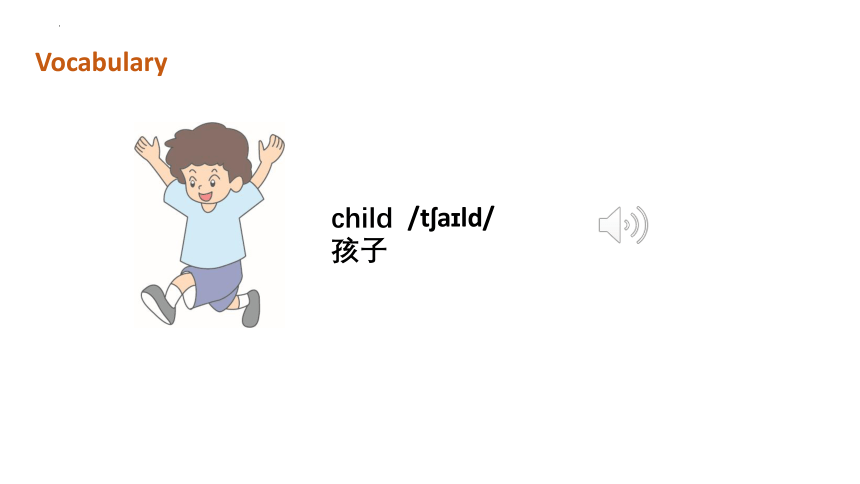
文档简介
(共26张PPT)
Unit 2 In Beijing
Lesson 7 Arriving in Beijing
People in Beijing
People in Beijing
Li Ming , Danny, Jenny and Mrs. Li arrive in Beijing at 1:17 in the afternoon. They are on their way to the hotel.
Danny: Look! There are many people in the park.
Jenny: Beijing is great!
A young woman is singing. Some old women are dancing.
A man is running. Some old men are doing Tai Chi.
People in Beijing
A child is flying a kite. Some children are
playing football.
李明,丹尼,珍妮和李太太在下午1:17到达北京。他们正在去酒店的路上。
珍妮:北京真棒!
丹尼:快看!公园里有很多人。
People in Beijing
一个孩子正在放风筝。一些孩子在踢足球。
一个年轻的女人在唱歌。一些老妇人正在跳舞。
一个男人在跑。一些老人正在打太极。
People in Beijing
people / pi pl/
人们
Vocabulary
many / meni/
许多的
Vocabulary
child /t a ld/
孩子
Vocabulary
women / w m n/
女人(woman的复数形式)
Vocabulary
men /men/
男人(man 的复数形式)
Vocabulary
Let’s do it!
Let’s do it!
写出下列单词的现在分词形式。
Grammar
1. fly sleep cook do listen walk
3. run swim put cut stop get
2. dance give use move ride
Grammar
1.一般情况下直接在动词后面+ ing
2.以不发音的e结尾的动词,去掉e再+ing
3.以辅元辅音字母结尾的词,要双写尾字母再加ing
4.以ie结尾的重读闭音节,变ie为y+ing (例:die-dying lie-lying)
动词变现在分词的变化规则
Grammar
写出下列名词的复数形式。
1. map picture apple
3. city baby country
2. bus box dress watch
4. leaf wife knife
5. foot child man woman
Grammar
1)一般情况加s
2) 以s, sh, ch, x结尾加es.
3) 以辅音字母+y结尾,变y为i再加es。
4)有些以f或fe结尾的,把f或fe变ve加s,例如:leaf-leaves shelf-shelves
5) 以y结尾的专有名词或元音字母+y结尾的名词变复数时,直接加s 例如:monkey---monkeys holiday---holidays
名词变复数的变化规则
Grammar
6)以辅音字母+o结尾的,加es。
例如:potato- potatoes tomato-tomatoes hero-heroes
7) 有些以辅音+o结尾的名词,直接加s,读/z/.
例如:piano-pianos photo-photos
8)不规则变化
What’s the child doing
The child is playing.
child
children
What are the children doing
The children are playing.
What’s the woman doing
The woman is cooking.
woman
women
What are the women doing
The women are cooking.
What’s the man doing
The man is reading a newspaper.
man
What are the men doing
The men are skating.
men
farmer
The _________ are _____________.
students
playing football
Pair work: Discuss
Thank you
Unit 2 In Beijing
Lesson 7 Arriving in Beijing
People in Beijing
People in Beijing
Li Ming , Danny, Jenny and Mrs. Li arrive in Beijing at 1:17 in the afternoon. They are on their way to the hotel.
Danny: Look! There are many people in the park.
Jenny: Beijing is great!
A young woman is singing. Some old women are dancing.
A man is running. Some old men are doing Tai Chi.
People in Beijing
A child is flying a kite. Some children are
playing football.
李明,丹尼,珍妮和李太太在下午1:17到达北京。他们正在去酒店的路上。
珍妮:北京真棒!
丹尼:快看!公园里有很多人。
People in Beijing
一个孩子正在放风筝。一些孩子在踢足球。
一个年轻的女人在唱歌。一些老妇人正在跳舞。
一个男人在跑。一些老人正在打太极。
People in Beijing
people / pi pl/
人们
Vocabulary
many / meni/
许多的
Vocabulary
child /t a ld/
孩子
Vocabulary
women / w m n/
女人(woman的复数形式)
Vocabulary
men /men/
男人(man 的复数形式)
Vocabulary
Let’s do it!
Let’s do it!
写出下列单词的现在分词形式。
Grammar
1. fly sleep cook do listen walk
3. run swim put cut stop get
2. dance give use move ride
Grammar
1.一般情况下直接在动词后面+ ing
2.以不发音的e结尾的动词,去掉e再+ing
3.以辅元辅音字母结尾的词,要双写尾字母再加ing
4.以ie结尾的重读闭音节,变ie为y+ing (例:die-dying lie-lying)
动词变现在分词的变化规则
Grammar
写出下列名词的复数形式。
1. map picture apple
3. city baby country
2. bus box dress watch
4. leaf wife knife
5. foot child man woman
Grammar
1)一般情况加s
2) 以s, sh, ch, x结尾加es.
3) 以辅音字母+y结尾,变y为i再加es。
4)有些以f或fe结尾的,把f或fe变ve加s,例如:leaf-leaves shelf-shelves
5) 以y结尾的专有名词或元音字母+y结尾的名词变复数时,直接加s 例如:monkey---monkeys holiday---holidays
名词变复数的变化规则
Grammar
6)以辅音字母+o结尾的,加es。
例如:potato- potatoes tomato-tomatoes hero-heroes
7) 有些以辅音+o结尾的名词,直接加s,读/z/.
例如:piano-pianos photo-photos
8)不规则变化
What’s the child doing
The child is playing.
child
children
What are the children doing
The children are playing.
What’s the woman doing
The woman is cooking.
woman
women
What are the women doing
The women are cooking.
What’s the man doing
The man is reading a newspaper.
man
What are the men doing
The men are skating.
men
farmer
The _________ are _____________.
students
playing football
Pair work: Discuss
Thank you
同课章节目录
- Unit 1 Going to Beijing
- Lesson 1 I Am Excited!
- Lesson 2 What Are You Doing?
- Lesson 3 Who Is Singing?
- Lesson 4 Who Is Hungry?
- Lesson 5 What Are They Doing?
- Lesson 6 Danny Is Lost!
- Again, Please!
- Unit 2 In Beijing
- Lesson 7 Arriving in Beijing
- Lesson 8 Tian'anmem Square
- Lesson 9 The Palace Museum
- Lesson 10 The Great Wall
- Lesson 11 Shopping in Beijing
- Lesson 12 A Visit to the Great Wall
- Again, Please!
- Unit 3 Writing Home
- Lesson 13 Let's Buy Postcards!
- Lesson 14 Jenny Writes a Postcard
- Lesson 15 Sending the Postcards
- Lesson 16 An Email Is Fast
- Lesson 17 Danny's Email
- Lesson 18 Little Zeke Sends an Email
- Unit 4 Did You Have a Nice Trip?
- Lesson 19 Li Ming Goes Home
- Lesson 20 Jenny Goes Home
- Lesson 21 Look at the Photos!
- Lesson 22 Gifts for Everyone
- Lesson 23 An Email from Li Ming
- Lesson 24 A Gift for Little Zeke
